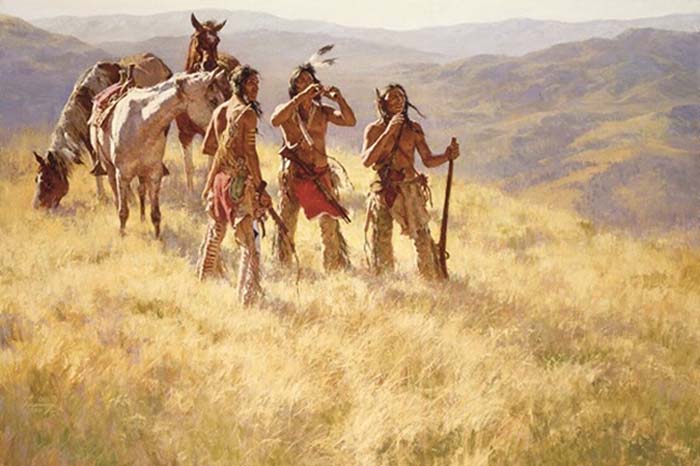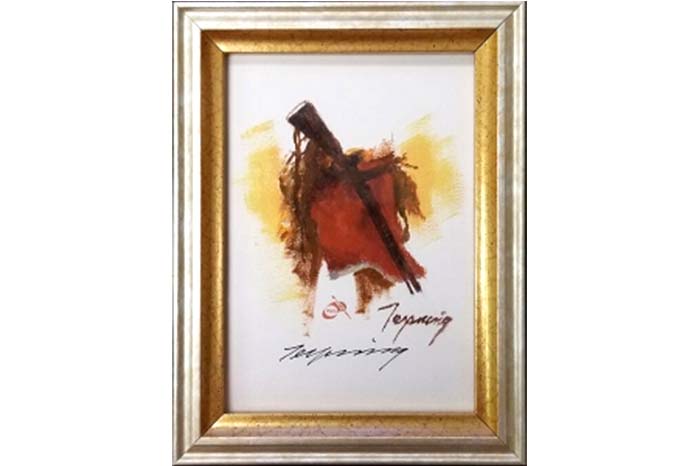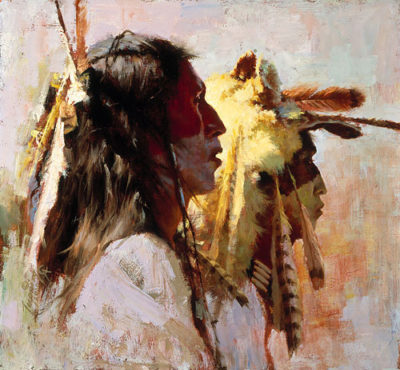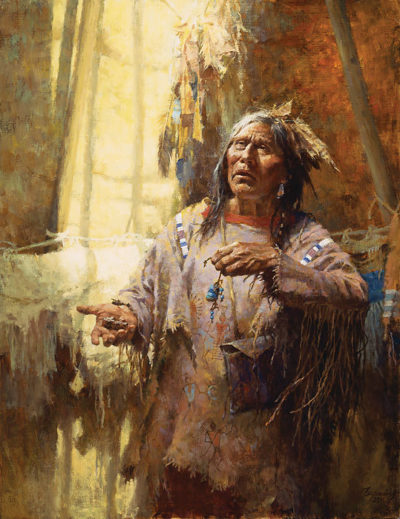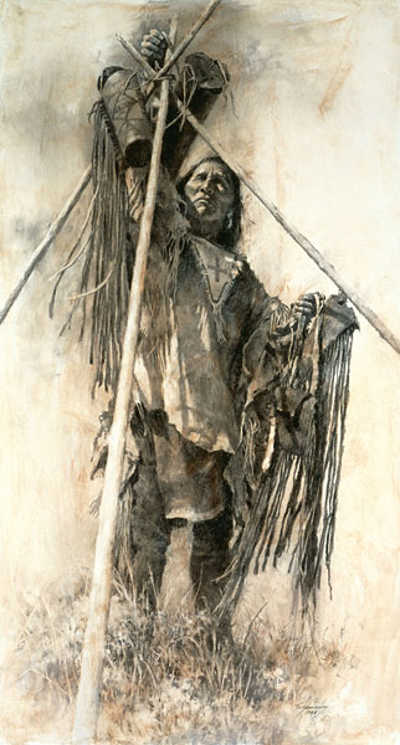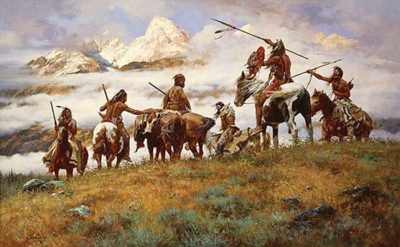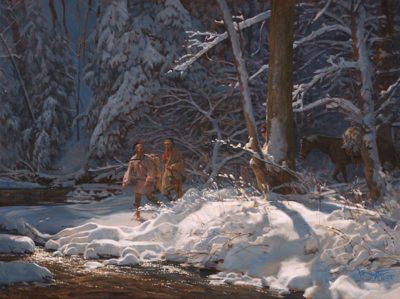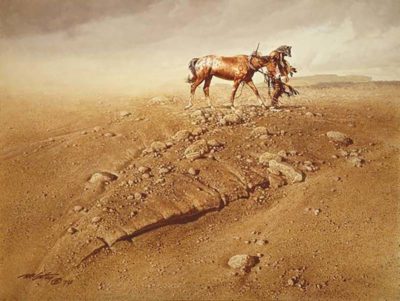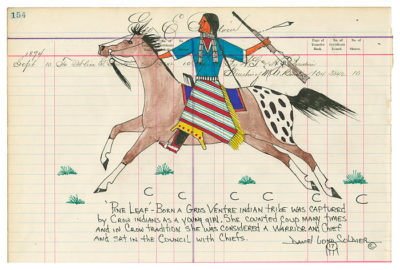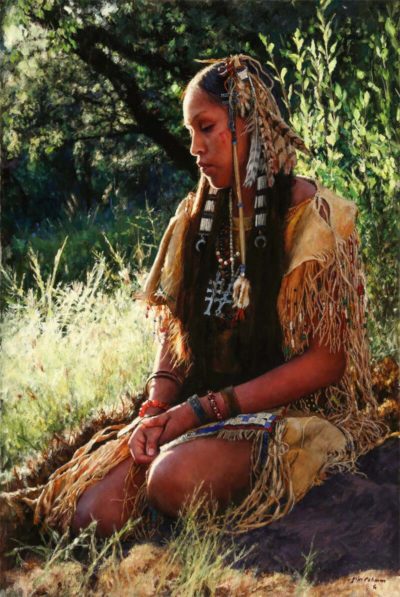Dust of Many Pony Soldiers
Artwork Description
Although this painting concerns a column of troops on the search for Indians, Howard Terpning has chosen to look at the situation from the point of view of three Sioux warriors watching them from afar. The grave faces of these men are a mute reflection of what they see, and what the future portends for them and their people. Their outmoded armament, old flintlock rifles, indicates that they will not be able to mount an effective defense and that the eventual outcome will be their defeat. In that sense, this work foretells the destruction of a free people’s way of life.
Includes matching 5 x 7 print:
“For this vignette I decided to focus on the sawed-off flintlock. These Indians called these weapons blanket guns because they could easily be concealed under a blanket. These flintlocks were also called northwest trade guns. They were sought after by men of the various tribes for obvious reasons. Trading posts usually had blacksmiths and the warriors would trade some item to the blacksmith in payment for having the barrel cut down. If a warrior could obtain crude tools, he might modify the gun himself. The trigger guard on the flintlock was very large so that in winter a man could get a finger on the trigger with a glove or mitten on. The early flintlocks were long and awkward to carry on horseback so eventually many were manufactured at a shorter length, but the blanket gun was always cut down by hand.
The breechclout was a simple and practical way for the Indian man to cloth himself. In early times, they were made from the hide of an animal and could be painted and decorated in some fashion. As trade goods became available, the native people became more and more dependent on acquiring those goods. Trade cloth was an important item of trade and was soon used as a replacement for the hide breechclout. Red was a common and popular color, although as other colors became available, they could also be used. The native people were very smart and were adapt at converting white man’s goods to fit their needs.”
Other editions:
- 29″ x 20 3/4″ – Limited Edition of 1000, and Artist Proofs available

